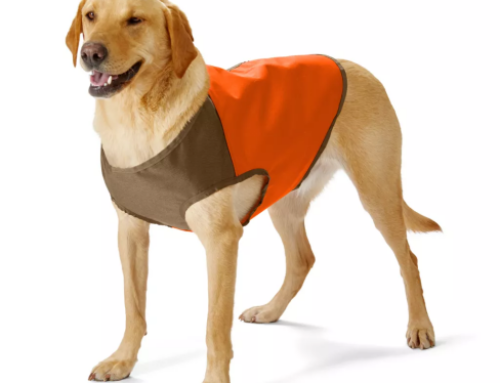Practicing like you hunt is essential for improving your hunting skills and increasing your chances of success in the field. Here are some tips on how to do it:
- Use the same equipment: When practicing, use the same equipment you plan to use while hunting. This includes your bow or firearm, arrows or bullets, and any other gear you plan to use in the field. This will help you get used to the weight and feel of your equipment and ensure that you are comfortable using it.
- Practice in hunting conditions: Try to practice in conditions that are similar to what you will experience while hunting. This includes practicing at the same time of day, in similar weather conditions, and in the same terrain. This will help you get used to the conditions you will be hunting in and prepare you for any challenges you may face.
- Practice shooting from different positions: Hunting often requires shooting from various positions, such as standing, kneeling, or sitting. Practice shooting from these positions to get used to them and ensure that you are comfortable shooting accurately from any angle.
- Practice with realistic targets: Use realistic targets when practicing, such as 3D animal targets or silhouettes. This will help you get used to shooting at a realistic target and prepare you for the shot placement required for a successful hunt.
- Focus on accuracy and precision: When practicing, focus on accuracy and precision rather than speed. Take the time to aim carefully and make sure your shots are accurate. This will help you develop good shooting habits that will serve you well in the field.
- Practice different scenarios: Practice shooting at moving targets, shooting from a blind or tree stand, or simulating a stalk. This will help you get used to different hunting scenarios and prepare you for any situation you may encounter while hunting.
By following these tips and practicing like you hunt, you can improve your hunting skills and increase your chances of success in the field. Remember to always prioritize safety and follow proper hunting practices.
Bow hunters…practice how you hunt.
As season is rapidly approaching, bow hunters are in the yard flinging arrows believing they’re doing all they need to prepare for the upcoming season. With that being said, shooting your bow and going through your mechanics is absolutely important, but are you practicing how you will hunt? Let’s talk about the different hunting setups that are available because this will be key in how you practice. Practicing how you hunt could be the difference between an empty or full freezer. Will you be in a ground blind, tree stand or maybe spot and stalk?
1.) Ground Blind
You can head to your local hunting store or amazon to grab a pop-up blind. Set one up in the backyard or at the range and use the same chair you plan to use as well. Practice shooting your bow in the blind sitting down as this will help you find where your chair should be placed and get you used to shooting in a seated position. When placing your chair in the blind, there are a few things to consider;
- Will my bow hit the blind as I come to full draw?
- Will my elbow hit the blind as I am drawing back?
- How far open do I need to have the windows so I can still see the animal, but not get busted because of my movement?
- How does shooting through mesh affect my arrow flight (or can I shoot through it)?
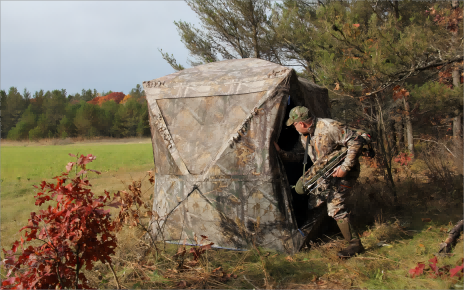
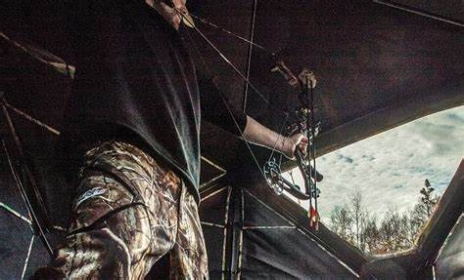
These are few things that need to be considered when practicing with your bow in the blind. Nothing hurts more than watching a big buck running away because your elbow hit the back of the blind when drawing back.
2.) Tree Stand or Tripod
Set up a stand in the yard or at the property you plan to hunt. Again, shooting from a seated/standing position fifteen feet in the air is different than standing on level ground in the yard. A few things to consider when practicing from an elevated stand;
- How high up will I be and what angle will I be shooting at?
- Is there any brush that could get in my way?
- How much room do I have to move?
With these things in mind, it is also important to practice getting your bow off the tree hook, drawing with slow and controlled movements, and taking the shot. This is important as you are no longer hidden behind a blind and it is much easier for a deer to pick off your movement.
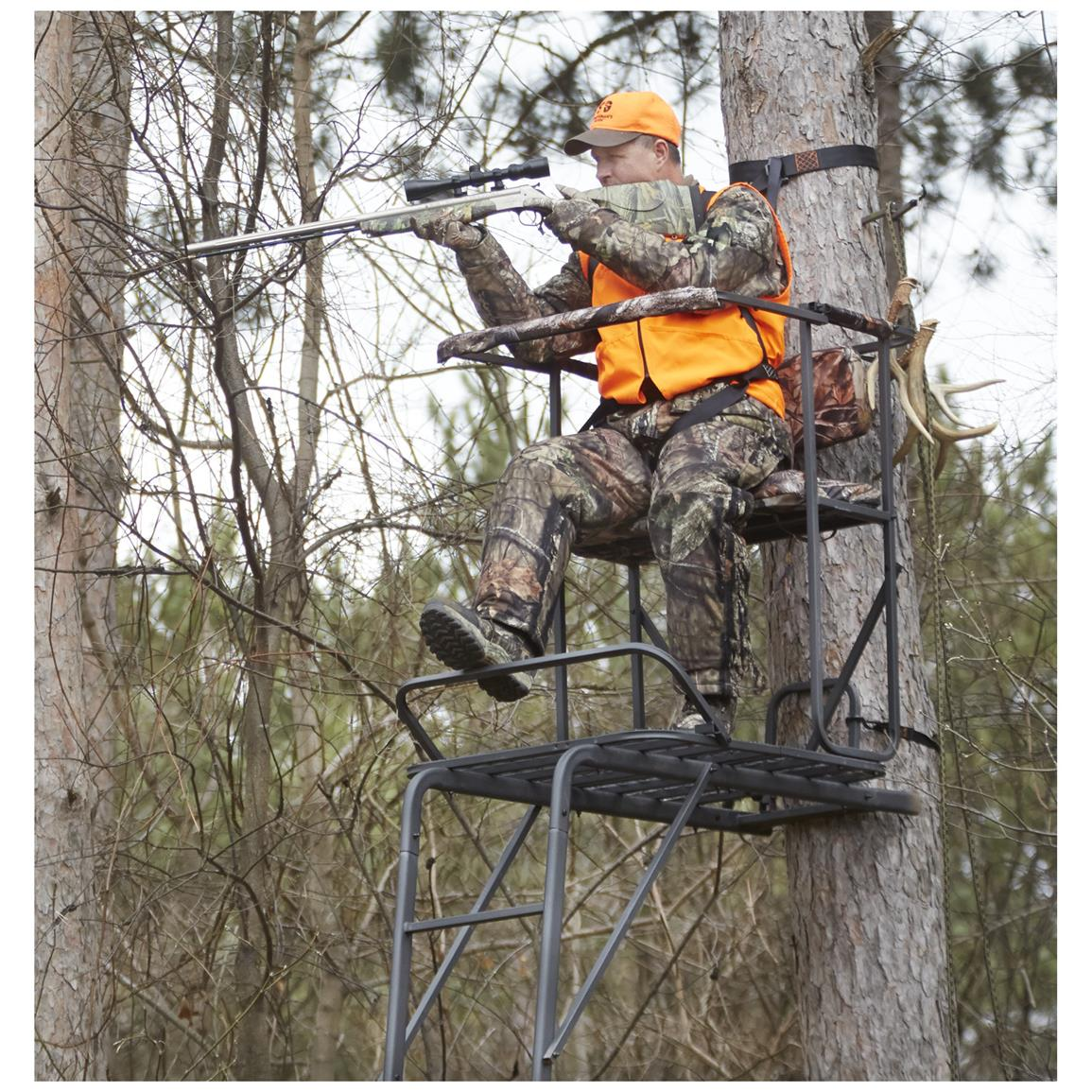
3.) Spot and Stalk
This is where the type of position you may shoot from will be about as predictable as the weather depending on what you are hunting. You never know if there will be a big buck bedded underneath your tree stand as you are walking in for an afternoon hunt. How are you going to get a shot on him? Will you be able to walk within an affective shooting distance? Or will you have to crawl and shoot from the knees? These are things to be thought about when practicing in the backyard. A few things to try;
- Shoot from different positions such as kneeling or sitting flat on the ground.
- Set up targets in trees or partially covered with brush.
- Practice drawing quickly and safely to get to your anchor points. Time is of the essence in spot and stalk scenarios!
Practice in as many ways as you can with spot and stalk. Get creative and try to think of anything that may arise when you are on this type of hunt. It’s better to be proactive than reactive in a spot and stalk style hunt.
4.) What are you wearing?
One of the most key points of practicing like you hunt is figuring out what time of year will you be hunting and what will be worn? Will you be hunting early-season, mid-season or late-season? While it may not be fun to put on your gloves and late-season jacket in the summer, it is important to get a feel for shooting with this gear on as it will tell you if your jacket is too restrictive. If you’re like me and don’t feel comfortable shooting with gloves on, invest in hand warmers! If you use a binocular harness or chest strap, be sure to get a feel for where and how it sits on your chest and that it is clearing the bow string.
Here are 3 styles hunting wear made by Bowins that are suitable for the beginning, middle and end of the season.
- Vest suitable for hunting early in the season
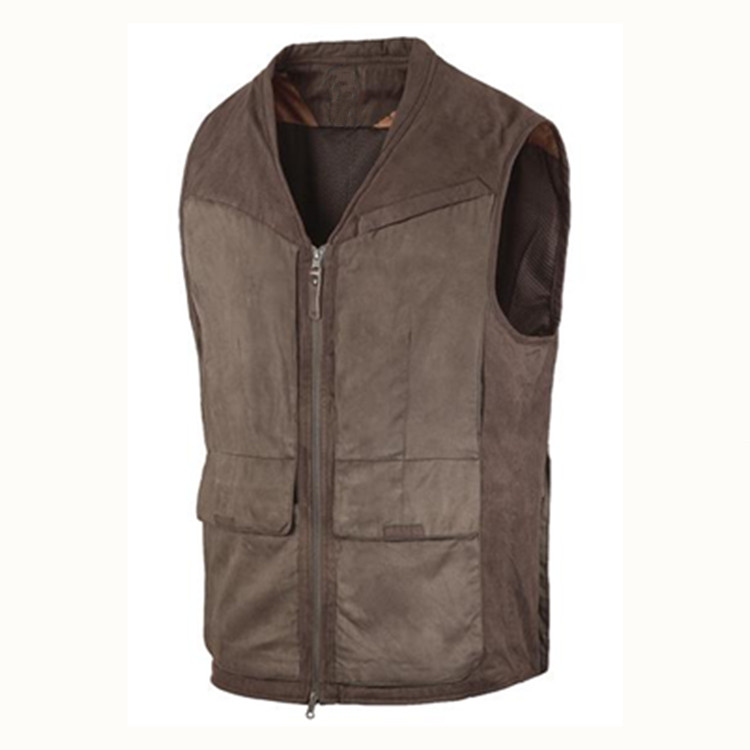
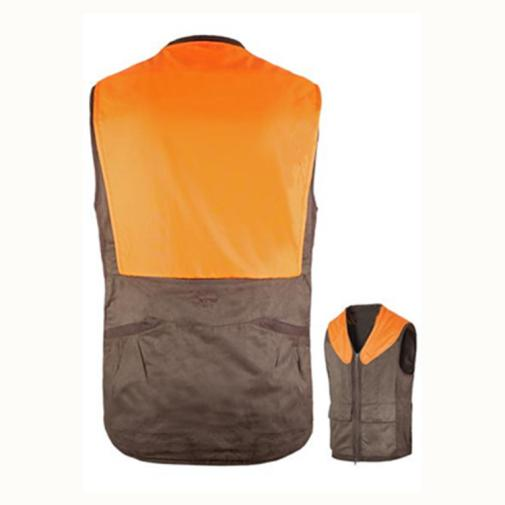
This hunting vest is mainly designed for hunting big game such as deer in autumn. The main fabric is suede laminated fabric with 380T inner liner. The zipper adopts YKK nylon reversed zipper. The seams are invisible. There is a safety vest in the pocket. Easy to store, Hi-vis orange color, easy to identify. This windproof thermal jacket is a must-have for fall hunting, and its versatility will meet your every need.
- Down jackets are recommended mid-season
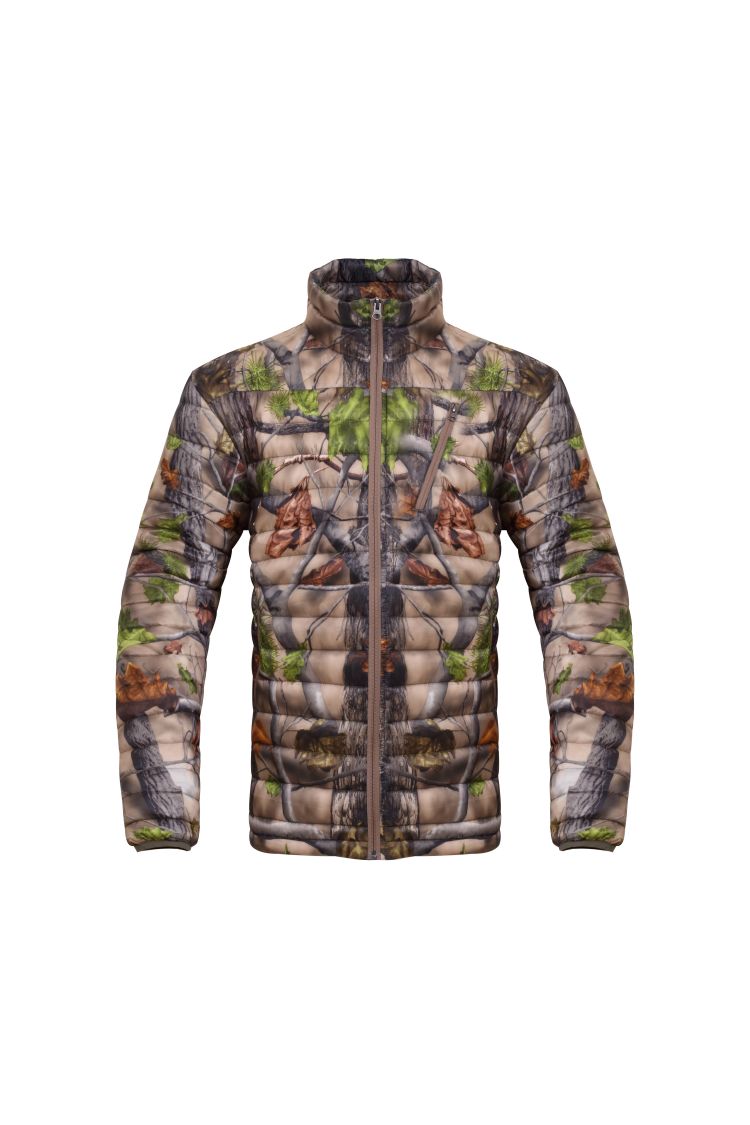
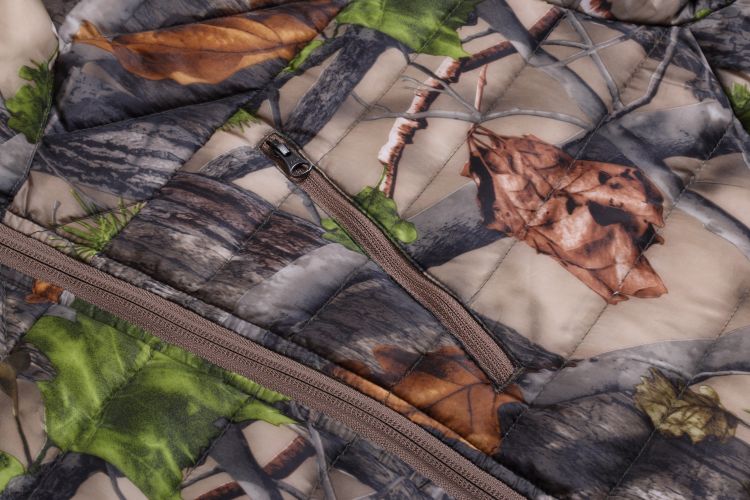

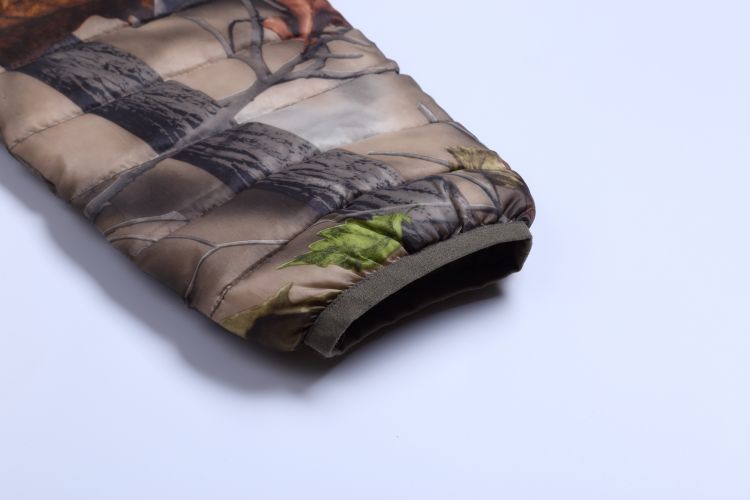
This light down jacket fabric is a light and down proof directly fabric, light and easy to storage, beautiful appearance, easy to move, fit the human body. The lower pocket is an exposed zipper pocket. The elastic edge of the cuff can better block the entry of cold wind and keep warm and comfortable. Down using RDS high fluffy 90/10 white duck down, environmental protection, high fluffy, less down filling, warm light. This jacket is ideal for winter hunting.
- Brushed tricot jacket is recommended at the end of the season




This hunting waterproof jacket is made of brushed tricot fabric, quiet and noise-free, making the hunter comfortable when moving and shooting. The main fabric is made of high quality TPU film. It is waterproof and breathable, which can extend your hunting time. These types of hunting jacket usually come with adjustable velcro cuffs that better block out cold air, and they’re easy to adjust even if you’re wearing gloves. Different types of pockets, such as chest, waist large pockets, can provide more storage space. All zippers are YKK brand. This hunting suit is ideal for deer hunting.
Regardless of what animal you are chasing, it is important to practice like you hunt. In older hunter’s experience, it is better to be over-prepared than it is to be under-prepared. While it is hard to predict everything that could happen, it is important to take the time to think about how you will be hunting and any kind of situation that could arise when you are out in the field. We hope these tips for practicing how you hunt are helpful and will prepare you for your next upcoming adventure!

